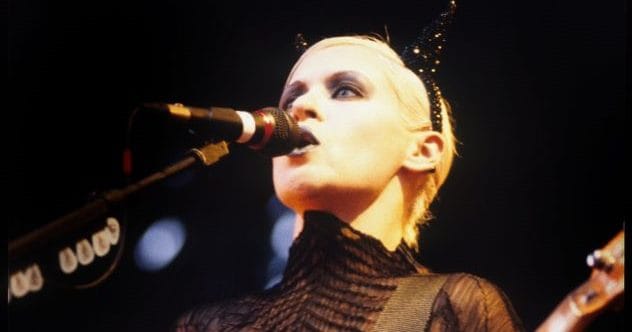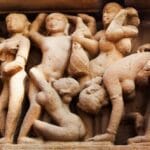The music industry, especially rock ‘n’ roll, has a long history of overlooking talented women. Countless female artists have shaped the sounds we love, only to be sidelined, forgotten, or overshadowed by their male contemporaries. It’s time to turn up the volume on their stories and give credit where it’s long overdue.
Let’s dive into the often turbulent, sometimes tragic, but always compelling stories of ten women in rock history who absolutely deserve recognition and a prime spot on your playlist. Their contributions were immense, even if history books (and sometimes even their own bands) didn’t always acknowledge it.
10 Poly Styrene
Some artists burst onto the scene, burn incredibly bright, and leave an indelible mark despite a brief career. Poly Styrene, born Marianne Joan Elliott-Said, was the unforgettable frontwoman of X-Ray Spex. Their second-ever live show, captured on Live at the Roxy WC2, showcased her electrifying presence. Sporting day-glo outfits and braces, the bi-racial Poly possessed a voice that could cut through steel, a stark contrast in the often bleak, male-dominated early UK punk scene.
X-Ray Spex released only one album during punk’s peak, but Poly’s impact was undeniable. Her story, however, is often tinged with mystery and misunderstood tragedy. An infamous anecdote involves her shaving her head after an alleged threat from Sid Vicious. Poly’s explanation was cryptic, referencing concentration camp survivors cleansing themselves, adding layers to her complex persona. She later stated it was a rejection of being sexualized.
After retreating from punk, she explored Hare Krishna but left due to troubling internal issues. Contrary to assumptions of becoming a hermit, Poly remained active in the arts until her passing from breast cancer in 2011, determined not to be defined solely by hardship.
9 Meg White
As one half of the iconic duo The White Stripes, it’s easy to view Jack White as the primary creative force. But drummer Meg White was arguably the soul of the band. Her minimalist, powerful drumming and enigmatic presence were foundational to their sound and image. Jack’s solo career constantly exists in her shadow, with interviewers always asking about her.
The band’s end came abruptly. In 2007, just before a show in Mississippi, Meg declared it would be their last. The remaining tour dates were cancelled, citing Meg’s acute anxiety. In an era still grappling with understanding mental health, Meg’s subsequent retreat from the public eye has been profound.
Society often expects a comeback story, a narrative of recovery shared through interviews or new projects. Meg White chose a different path. She hasn’t made a public appearance since 2010 and maintains no social media presence. Choosing privacy and peace over public scrutiny, she disappeared from the spotlight, possibly finding a happier existence—a truly courageous act.
8 Sister Rosetta Tharpe
While the Rock & Roll Hall of Fame has its critics, its 2018 induction of Sister Rosetta Tharpe finally brought wider recognition to a true pioneer. Born over a century earlier and passing away in 1973, Tharpe remarkably didn’t even have a headstone until 2009. This was despite being the first gospel singer to score hits on the R&B charts (then called “race records”) and influencing legends like Elvis Presley, Little Richard, and Bob Dylan.
Many claim the title of “inventor of rock ‘n’ roll,” but Sister Rosetta Tharpe has one of the strongest cases. She is the crucial link between gospel, R&B, and early rock. Listening to her 1938 hit “This Train,” you hear heavily distorted electric guitar decades ahead of its time. Her playing was revolutionary, sounding unlike anything else from that era. She wasn’t just influenced by rock ‘n’ roll; she was actively creating it.
7 Karen Dalton
Bob Dylan famously praised Karen Dalton in his memoir, calling her his “favorite singer” in the Greenwich Village folk scene. He described her voice as akin to Billie Holiday’s and her guitar playing like Jimmy Reed’s. Yet, despite this high praise, Dalton remains relatively unknown, her story sharing unsettling parallels with her more famous admirer.
Dalton’s voice is haunting. The Billie Holiday comparison holds, but Dalton’s voice carried a distinct, world-weary crackle, lending weight to every note. Like Dylan’s unique vocal style, it could be challenging for mainstream audiences. Her uncompromising artistic vision and purist folk sensibilities also hindered her success. She even turned down forming a group with John Phillips, who later found fame with The Mamas and the Papas. What was an asset for Dylan—a raspy voice and artistic integrity—proved detrimental for Dalton.
Tragically, Karen Dalton died from AIDS-related complications in 1993, living in a mobile home near Woodstock. A fire later destroyed many of her recordings, leaving behind only two studio albums that capture her breathtaking, raw talent.
6 Nico
Nico’s name graces the cover of one of rock’s most influential albums, The Velvet Underground & Nico, yet she remains an enigma. Her striking image—standing out in white amongst the band’s black attire—is iconic, but her role was limited, singing lead on only a few tracks. Her addition to the band was largely orchestrated by Andy Warhol, who felt frontman Lou Reed lacked star power and wanted a visually captivating presence.
Born Christa Päffgen, she began modeling at 15 and was given the name Nico by a photographer. Biographer Jennifer Otter Bickerdike noted that essentially no one ever heard her ask to be called Christa. The persona of ‘Nico’ seemed to consume her identity, often defined by her associations, like her affair with Alain Delon, which was highlighted in her obituary.
In stark contrast to the manufactured image, Nico’s solo career produced deeply personal, relentlessly dark, and challenging music. This artistic output felt more authentic, hinting at the complex, sometimes troubled inner life (including reported violent and racist tendencies) obscured by the cool, detached model persona.
5 Jackie Fox
The story of Jackie Fox (then Fuchs) and The Runaways manager, Kim Fowley, is deeply disturbing. Reading her 2015 Huffington Post interview about meeting Fowley as a teenager in his squalid apartment sets a chilling tone. Fowley’s vision of an all-teenage girl rock band quickly devolved into a nightmare scenario.
In 2015, following Fowley’s death, Fuchs alleged that he had raped her at a New Year’s Eve party in 1975. Horrifically, she claimed the assault happened in front of multiple witnesses, including bandmates Cherie Currie and Joan Jett, and songwriter Kari Krome. While accounts differ—Krome alleged Currie and Jett watched and laughed, while Currie stated she protested before leaving—both confirmed the assault occurred. Joan Jett has denied witnessing the event.
The fact that a man could commit such an act against a minor in front of others and remain free until his death decades later is a stark indictment. Jackie Fuchs bravely shared her story and has since built a successful life as an attorney and a formidable game show contestant, appearing on The Chase, Who Wants to Be a Millionaire, and winning four nights on Jeopardy.
4 Kate Schellenbach
The Beastie Boys’ hit “(You Gotta) Fight for Your Right (To Party!)” is often cited as a song fans misunderstand. Intended as a parody of party anthems, its message got lost, and perhaps the band themselves blurred the lines. In their early punk days (circa 1981), the Beastie Boys featured Kate Schellenbach on drums.
However, as the group transitioned towards hip-hop, adopting a more macho, frat-boy persona, Schellenbach was pushed out. Adam Horovitz (Ad-Rock) admitted their shift was problematic: “We got so caught up with making fun of that rock-star persona that we became that persona… It got so bad we kicked Kate out of the band because she didn’t fit into our new tough-rapper-guy identity. How f**ked up is that!?!”
Their gain was music’s loss, but Schellenbach landed on her feet. She went on to co-found the successful alternative band Luscious Jackson and later became a television producer, proving her talent extended far beyond the Beastie Boys’ narrow vision.
3 D’arcy Wretzky
When bassist D’arcy Wretzky left The Smashing Pumpkins in 1999, it marked the beginning of the end for the band’s classic lineup. Frontman Billy Corgan continued with various iterations, but fan interest waned. Fast forward to the 2018 reunion announcement, and Wretzky was conspicuously absent. Corgan initially claimed she declined to participate.
Wretzky swiftly countered, releasing text messages showing Corgan had invited her, then rescinded the offer. This ignited an ugly public dispute. Wretzky gave interviews detailing Corgan’s controlling behavior. The situation turned even darker when Corgan’s friend, DJ Mancow, leaked a police photo of Wretzky taken after an assault, attempting to frame her visible injuries as purely the result of drug use.
Wretzky has been open about her struggles with addiction, making Mancow’s (and by implication, Corgan’s) actions particularly cruel, weaponizing her vulnerability to control the reunion narrative. It shed a disturbing light on the band’s internal dynamics.
2 Clare Torry
Clare Torry delivered one of the most iconic vocal performances in rock history on Pink Floyd’s “The Great Gig in the Sky” from Dark Side of the Moon. Her wordless, improvised singing elevates the track, making it an unforgettable, emotionally charged centerpiece of a legendary album.
Despite essentially co-creating the song through her spontaneous performance, Torry was initially paid a standard session fee of £30 (double time for a Sunday). She was even told her vocals might not make the final cut. Meanwhile, Dark Side of the Moon became one of the best-selling albums ever, charting for an astonishing 26 years.
It wasn’t until 2005, long after she’d retired, that Torry sought proper credit and compensation. Pink Floyd commendably didn’t contest her claim. While the settlement details remain private, pressings of the album after 2005 rightfully list Torry as a co-writer. Her case highlighted a recurring issue where female artists’ improvisational contributions are sometimes dismissed as not constituting ‘real’ songwriting.
1 Natasha Shneider
Natasha Shneider’s life reads like an epic novel. In 1976, at age 20, she defected from the Soviet Union, arriving in New York penniless and pregnant. Just two years later, she signed with Motown Records as part of the group Black Russian. By 1984, she was acting in the sci-fi film 2010: The Year We Make Contact. Her musical journey continued: she co-produced and co-wrote tracks for Chris Cornell’s solo debut, Euphoria Morning (1999), and later joined Queens of the Stone Age (2006).
Throughout this incredibly varied career, the constant thread was her band Eleven, formed in 1987 with her husband Alain Johannes and Jack Irons (Pearl Jam, Red Hot Chili Peppers). Eleven achieved modest success but developed a dedicated following. Shneider was a multi-talented musician—singer, keyboardist, songwriter, producer.
Sadly, Natasha Shneider passed away from breast cancer in 2008. As a poignant tribute, Chris Cornell often performed his song “When I’m Down” live, accompanied only by a vinyl recording of Shneider’s original piano part, a haunting reminder of her immense talent and enduring presence.
These ten women represent just a fraction of the female talent often relegated to the footnotes of rock history. Their stories—marked by innovation, resilience, injustice, and incredible artistry—deserve to be celebrated and remembered. Let’s make sure their music and legacies continue to inspire.
Who are some other underappreciated women in rock you think deserve more recognition? Leave your comment below!










